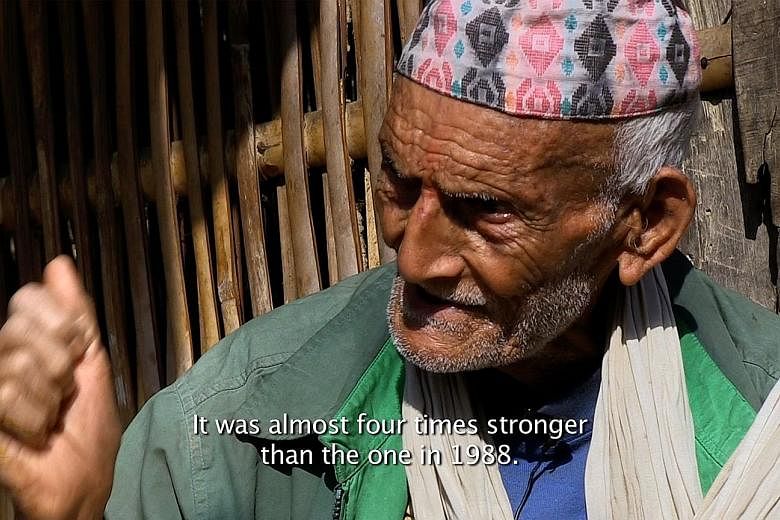A team of researchers from Nanyang Technological University (NTU) was in Nepal in 2014 to study earthquakes. Besides a trove of geological data, the trip yielded a small clutch of prizes for film-making.
The Ratu River Expedition, a 25-minute documentary of the trip explaining to non-scientists the purpose of the NTU team's work, has been screened at 13 festivals around the world, including China, Ukraine, the United States and Austria.
At the WorldFest-Houston International Film and Video Festival in April, it won a Platinum Remi prize in the Documentary (under 60 minutes) category.
The film's director is Professor Isaac Kerlow, head of the Art and Media Group of NTU's Earth Observatory of Singapore. The group comprises artists with a mission to use films, games and other platforms to communicate scientific research to a general audience.
"The group puts a significant amount of energy into understanding what the scientists are doing. The more we understand, the better the work we produce," says Prof Kerlow.
The Ratu River Expedition, available on the streaming site Vimeo, details the day-to-day work of the NTU team at a fault line on the Ratu River, 140km south of Mount Everest.
The scientists, working with members of Nepal's Department of Mines and Geology, are trying to get a sense of the area's hidden ground activity across time, as far back as the 13th century.
They employ cutting-edge techniques, such the use of a truck that transmits shock waves into the earth. The waves bouncing off the different layers are studied to determine the shape of the fault, and how often and how violently it has slipped in the past, resulting in quakes.
Prof Kerlow, who is of Mexican and American nationalities, says the initial plan was to make a five-minute film. But his team came back from Nepal with such great footage, they decided to create a longer work.
To break down the science into digestible chunks, the facts are richly illustrated with cheerful graphics that have a hand-drawn look.
"We saw that this was a great opportunity to bring this great research to the people of Nepal to help them better understand how the fault behaves and to be aware of the issues," says Prof Kerlow.
With the help of scientists from Nepal, the film-makers have created a Nepali-subtitled version of the documentary. An online preview gained 79,000 likes on Facebook, mostly from Nepalese viewers, says Prof Kerlow, 57.
Structural geologist assistant professor Judith Hubbard, 33, headed the 2014 expedition.
The American researcher says Nepal sits on one of the most dangerous faults in the world. In April last year, an earthquake killed more than 8,000 people in the region.
Earthquake prediction is still in its infancy and that was not the point of the NTU trip. It is extremely useful to gain a historical perspective on fault activity in Kathmandu and the surrounding areas. That data might be used to determine risks over the long term.
The long time periods between major seismic events mean that human records are scarce.
Prof Hubbard says: "Earthquakes in Nepal occur every 700 years, maybe, so you can't rely on historical records, you have to rely on geological signals." •The Ratu River Expedition is available on the streaming site Vimeo.
• The Ratu River Expedition is available on the streaming site Vimeo.


